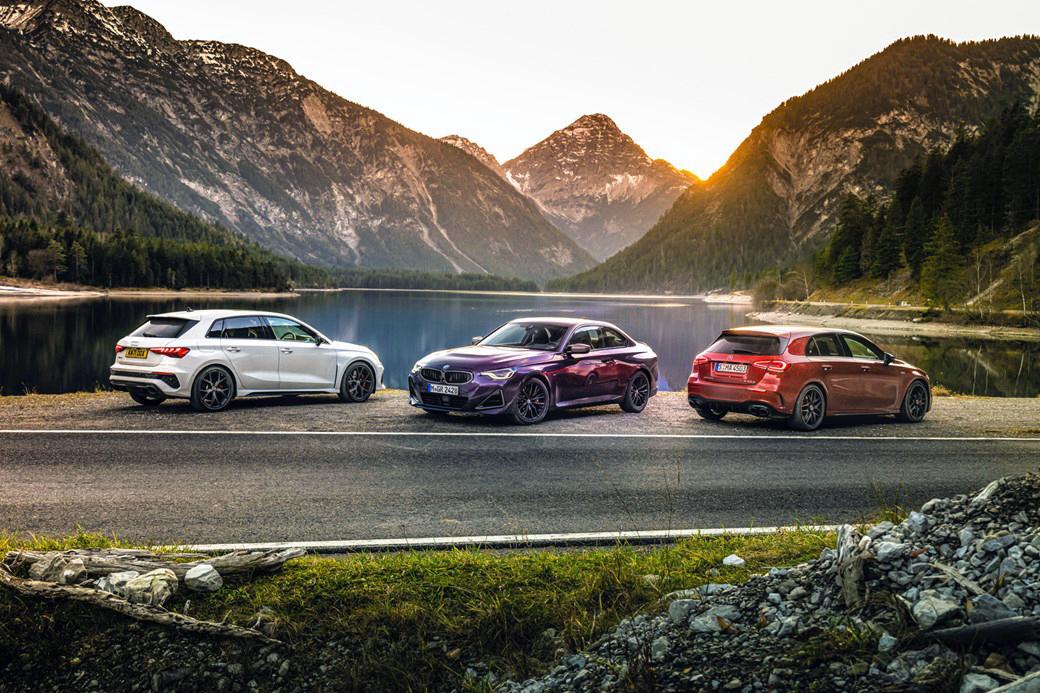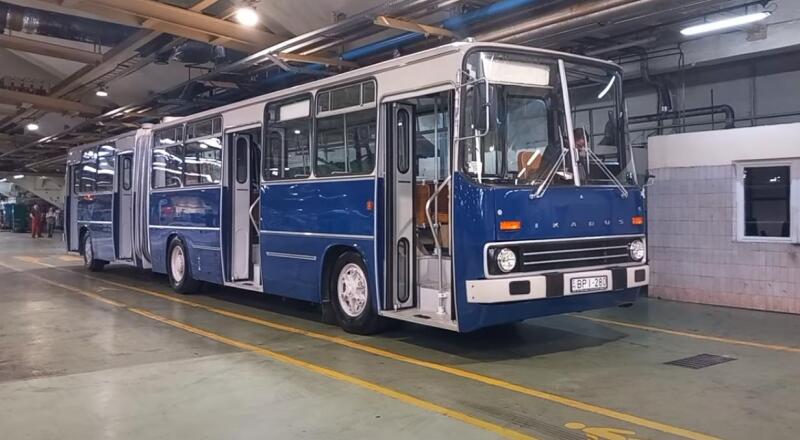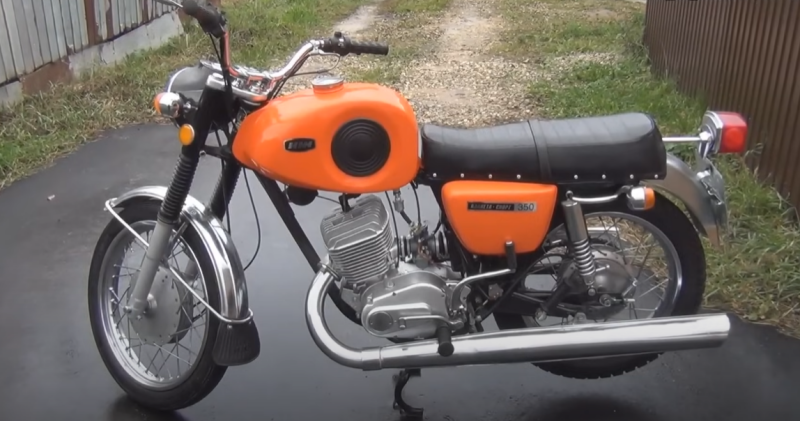Lancia Tipo 102
In the story about the "five-cylinder" family, it is impossible not to mention the very first such engine.
Lancia was one of the first Italian companies to use diesel engines in its trucks, producing under license the German two-cylinder Junkers engines with a displacement of 3181 cm³ and a power of 64 hp. With. at 1500 rpm installed on Lancia Ro. The three-cylinder version with a displacement of 4771 cm³ produced 95 hp. With. installed on the Ro-Ro model. German engines, however, were expensive to manufacture, so Vincenzo Lancia commissioned engineers to develop his own engine.
 Lancia 3Ro. Photo: Youtube.com
Lancia 3Ro. Photo: Youtube.comThis is how the Lancia Tipo 102 with a working volume of 6875 cm³ appeared, producing 93 hp. With. at 1860 rpm. And this is the world's first serial 5-cylinder car engine. The maximum speed of the Lancia 3Ro when fully loaded was 45 km / h. Two types of cab were offered: the standard version and the extended "Lungo", with a sleeper.
OM617
The Germans from Daimler-Benz were the first to install a serial five-cylinder engine on a passenger car in 1974. Debuted in the Mercedes-Benz W115, the 2,4-litre engine, developed from the 616-litre four-cylinder OM1991 diesel engine, remained in production until XNUMX, becoming one of the most reliable engines ever built by human civilization. The resource of this five-cylinder diesel engine reaches a million kilometers - they don't make them anymore!
 Mercedes-Benz 300D (W123). Photo: Youtube.com
Mercedes-Benz 300D (W123). Photo: Youtube.comMoreover, this unit is able to work on everything that burns! Including vegetable oil. In 1976, a turbocharger was installed on the OM617, as a result of which the power increased from 80 to 111 horses. The most extreme version of the German "five" was the OM617LA. This superdiesel, installed on the record-breaking Mercedes-Benz C111-IID, and later on the C111-IIID, developed up to 230 horses and helped set 9 world speed records.
Audi EA828 – Audi 100 5E (C2)
We talked about the first five-cylinder diesel engine, so it would be unfair not to mention the first petrol.
Talking about five-cylinder gasoline engines, it is impossible to ignore Honda racing motorcycles. For the first time, the Japanese used a similar scheme in 1966, on a 125 cc RC149 motorcycle. The engine developed 30 horses at 18 rpm, which is impressive even today!
The honor of pioneering the automotive world belongs to the company whose name is still associated with a particular R5 configuration - Audi. In 1976, the Ingolstadt-based company introduced the second-generation Audi 100, with a 2,1-liter five-cylinder engine producing 136 horsepower. Why did Ingolstadt choose this configuration?
The "four" was not prestigious enough for a model designed to compete with BMW and Mercedes-Benz. Audi did not have a V6 engine, and engineers from Ingolstadt could not use the inline "six" for weight and size reasons. Ultimately, this dilemma led to the development of the inline five with the EA828 index.
 Audi Sport quattro S1 E2. Photo: Youtube.com
Audi Sport quattro S1 E2. Photo: Youtube.comBased on the Volkswagen EA827 four-cylinder engine, the 2,1-liter five produced 136 horsepower. This unit was installed on the Audi 100 5E car, as a prestigious version of the base four-cylinder cars. This generation of "fives" was used until the mid-nineties.
Fiat Pratola Serra
In 1994, the Italians introduced a strange-looking sports car Fiat Coupe, under the hood of which they installed a gasoline 2,0-liter 20-valve inline five-cylinder engine with 144 horses. The same unit was used for the Lancia Kappa 5.20 business class model, and a 2.4 liter version for 175 horses was also offered for Lancia.
 The Fiat Coupe was designed by Chris Bangle. Photo: Youtube.com
The Fiat Coupe was designed by Chris Bangle. Photo: Youtube.comLater, this “five” was installed on the Bravo and Brava hatchbacks, and on the Marea sedan. In 1999, a turbocharged modification appeared for the FIAT Coupe Turbo Plus and Lancia Kappa Coupe: 220 horsepower was enough to make the Fiat one of the fastest front-wheel drive cars of its time.
Advantages of 5-cylinder engines
✅ Smoother operation
✅ More compact than "sixes"
✅ Sound!
Disadvantages
✅ Longer than inline fours
✅ Balance shaft required to reduce vibration
✅ High production cost
✅ Large moments of inertia
Welcome to the world of Volvo modular!
Volvo B5254: Developed as part of the Galaxy project, the family included four, five and six-cylinder engine options. The Volvo five-cylinder engine known as the B5254F debuted on the 850 in June 1991. Later, these engines were installed on the entire range, with the exception of the first generation Volvo S40.
 "Mad Shed" - Volvo 850 T5R. Photo: Youtube.com
"Mad Shed" - Volvo 850 T5R. Photo: Youtube.comThe pinnacle of the development of the "fives" from Volvo was a 2,5-liter turbocharged engine, prepared for the prototype C30 Polestar Performance Concept. On the concept car presented in 2010, the Swedes installed the B5254T7 engine. This is the same engine that was used in the production C30 T5, but with a KKK K26 turbocharger, reinforced pistons, connecting rods and different camshafts. The result was 405 horses and 510 Nm of torque, which, combined with Quaife differentials, four-wheel drive, Öhlins dampers and springs, a different steering ratio and improved brakes, tires and wheels, turned the compact Volvo into a thermonuclear bomb!
Honda G25A
This Japanese brand loves to take on engineering challenges. And the more difficult the task, the more enthusiastically they took up its implementation in Honda. Five-cylinder engines of the Honda G family first appeared on the Japanese market in 1989. And although these engines drove the front wheels, Honda mounted them longitudinally for more even weight distribution: three of the engine's five cylinders were located behind the front axle.
 Acura TL. Photo: Youtube.com
Acura TL. Photo: Youtube.comThe Honda Vigor, known in the United States under the name Acura, used a 2,5-liter version of the engine with 190 horsepower. This engine was later installed on the 1996 Acura TL. But in the second generation, the R5 was abandoned in favor of the V6.
Volkswagen VR5 AGZ
One of the most unusual engines in the history of the automotive industry. Usually "fives" were created by adding one cylinder to a 4-cylinder unit. But for the 4th generation Golf, the Germans did the opposite, deciding to “saw off” one cylinder from the VR6 to offer customers an alternative to the turbocharged 1.8 engine. So the VR5 was born, with a working volume of 2.3 liters and a power of 150 horses. Perhaps, with the exception of the sound and such a “little thing” as a resource reaching up to half a million kilometers, he had no advantages over the 1.8 turbo. At the same time, cars with such engines cost more, but did not have such forcing capabilities as EA113. Therefore, the VR5 is not the most common Volkswagen engine.
Audi DAZA
The last five-cylinder engine on this list, of course, should be called Audi. And it will most likely be the last R5 we see as the world rapidly embarks on electrification.
 On the Quarter, a five-cylinder Audi beat a 6-cylinder BMW, and a Mercedes-Benz with four! Photo: Youtube.com
On the Quarter, a five-cylinder Audi beat a 6-cylinder BMW, and a Mercedes-Benz with four! Photo: Youtube.comThe Audi A3 IV (8Y) was introduced in 2020, and a little later, the RS3 appeared, developing 400 horses! This engine has one of the most beautiful exhaust sounds of any car sold today! Sometimes you might even mistake it for a V10 from an Audi R8, and you can trace its ancestry back to the 2009 Audi TT RS, the first modern Audi with an inline five-cylinder engine. What is this “five” capable of? From zero to hundreds of Audi "bullets" in four seconds, which allows her to deal with its competitors in the face of the BMW M240i and Mercedes-Benz AMG CLA 45S.
Once upon a time, five-cylinder engines were quite common, thanks to the efforts of Volvo, Audi, Honda and FIAT. Such motors were considered prestigious and were installed even on compact golf-class models. But now, under the onslaught of electric vehicles, the “five” is an endangered species.










